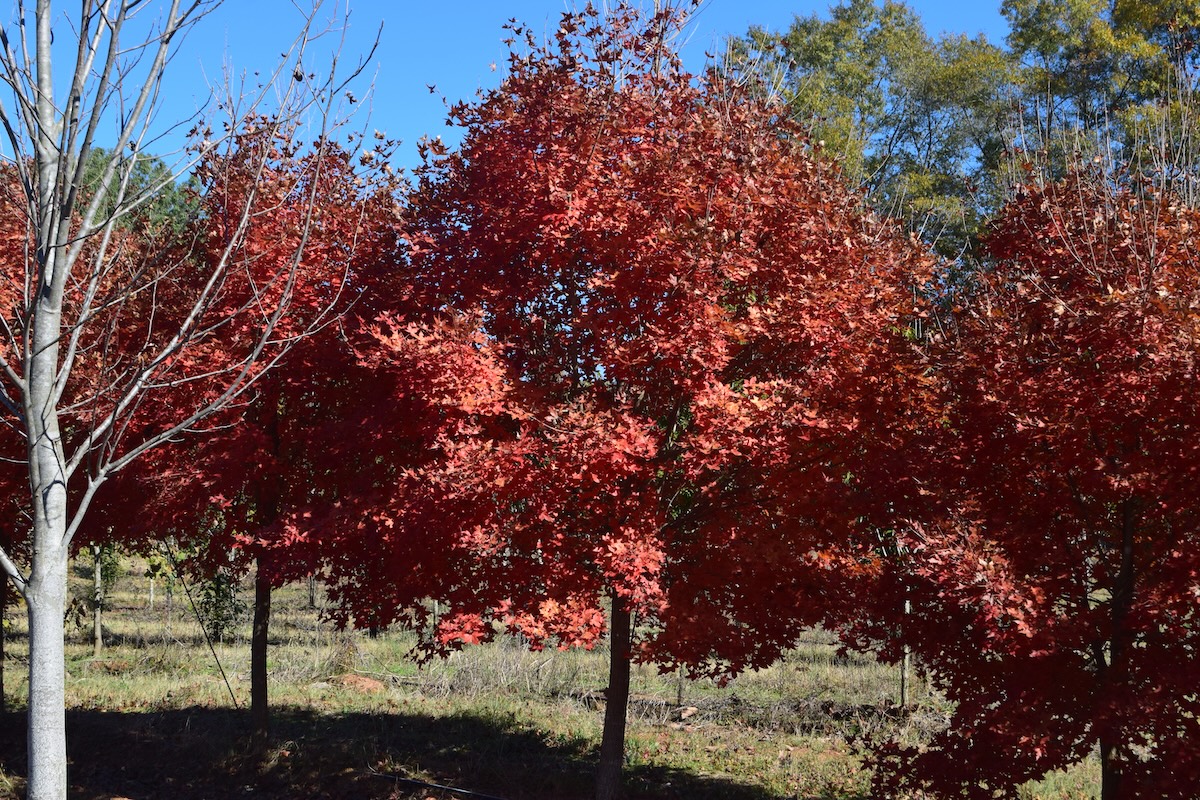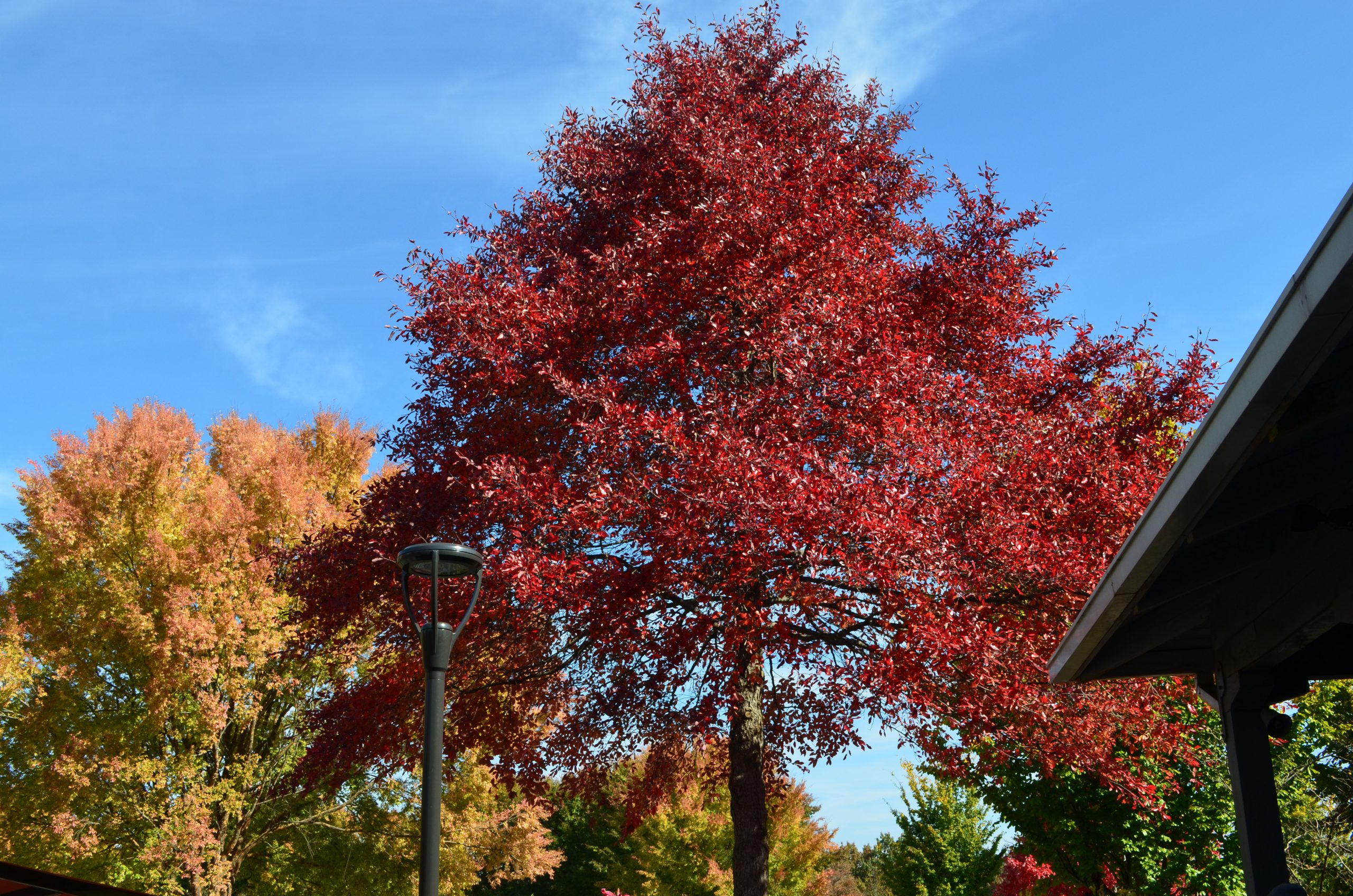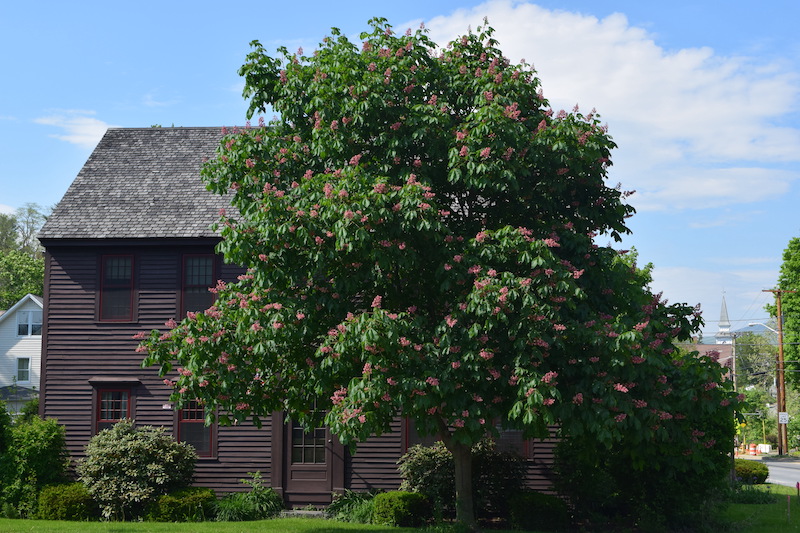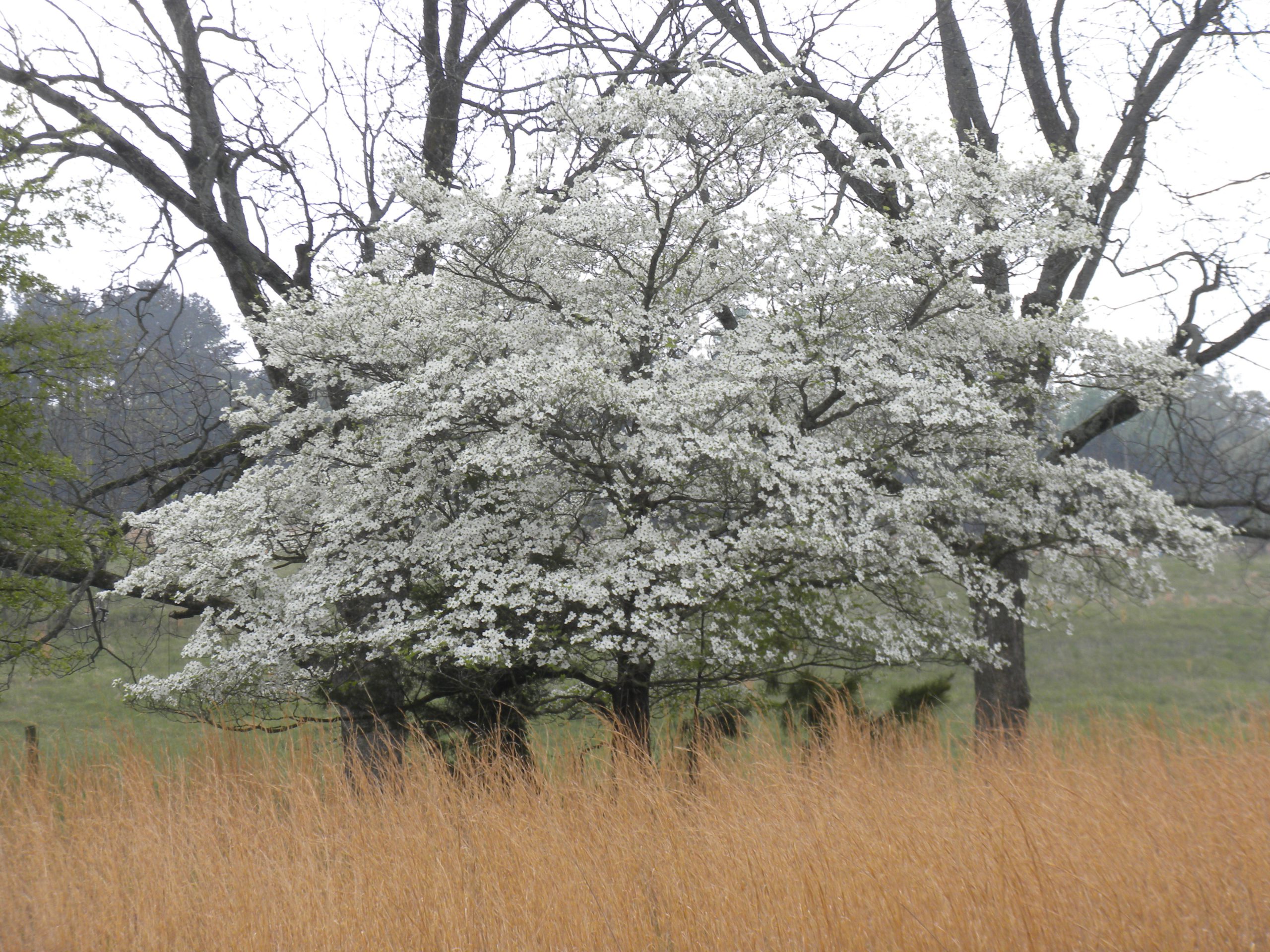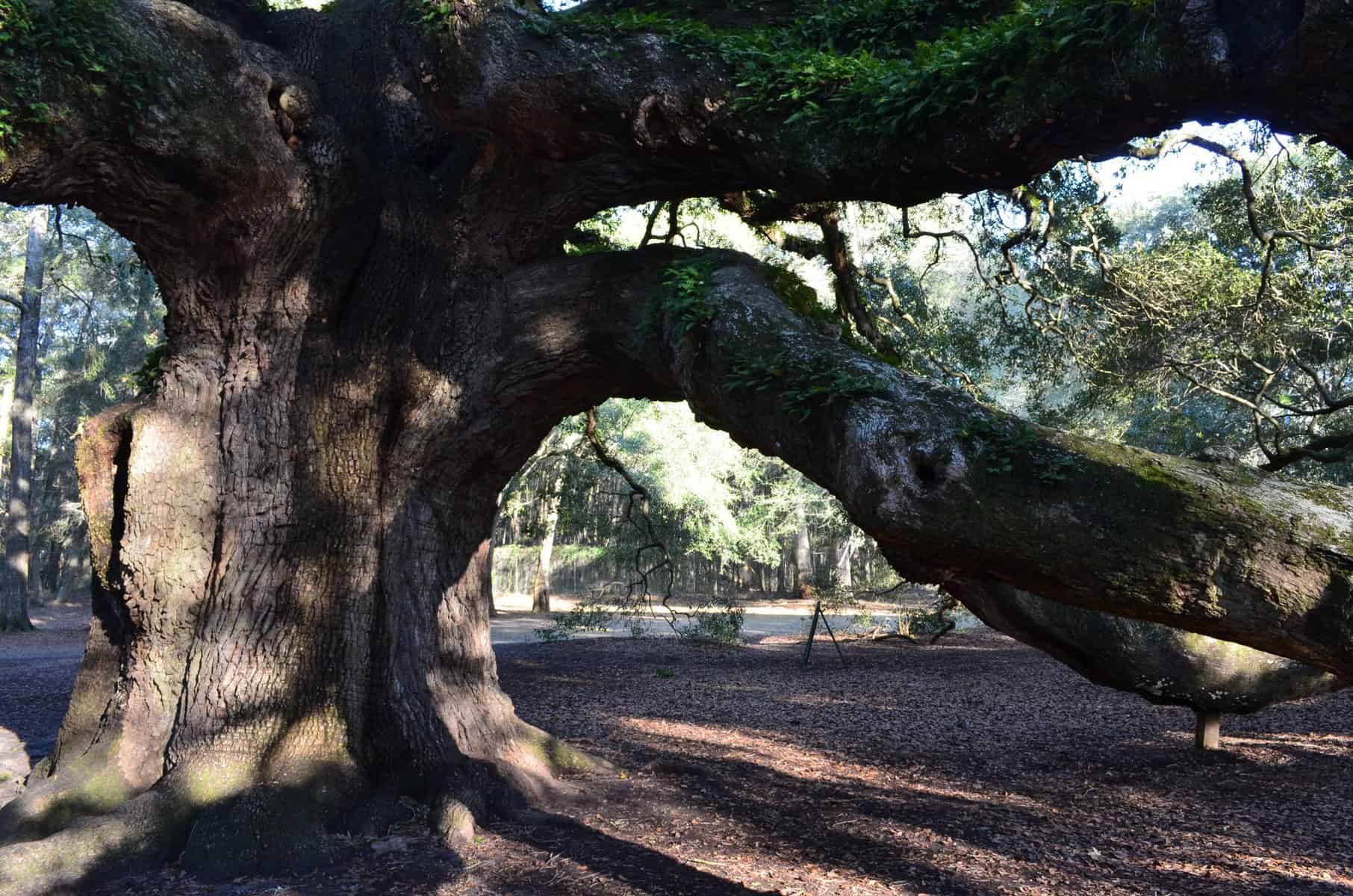Parrotia persica-Persian Parrotia, Persian Ironwood
Michael A. Dirr
What a great small tree! Roaming the Georgia campus in early March, I notice specks of bronzy green emerging from the dusty gray buds. Leaves will be fully formed by early to mid-April and persist until November-December when fall color signals time to rest. Leaves are tremendously frost resistant to around 20°F. This is also true for Fothergilla, Hamamelis, Disanthus, and other Hamamelidaceae taxa (witch-hazel family members).
The remarkable aspect of the early leafing campus trees is their survival, three in a triangular traffic island: hot, dry, compacted (as students walk between the trees). For over 40-years they have defied the laws of stress. Why not more widely utilized? From Boston to Chicago to Portland and south to Athens, successful plantings are known to the author and improved cultivars are coming online.
Every street, park, golf course, campus, and garden have niches for Parrotia. The new Dirr garden has five P. persica and the recent introduction, P. subaequalis, Chinese parrotia. Traveling and literature treasure hunts have unearthed more cultivars than I knew existed (see below). In February, I walked rows of seedling Parrotia persica at John Malone’s Summershade Nursery, Good Hope, GA. Variation in leaf retention, most with brown leaves, enough without, that this would be a quality selection trait, also tied to fall color. In a previous Dirr garden, the seedling Parrotias ranged from yellow to orange-red, but never consistent. A brilliant, listing toward red selection, would have market prominence akin to the best red maple cultivars like October Glory® and ‘Red Sunset’.
Parrotia persica is native to the Caspian forest of Northern Iran and Azerbaijan where 60’ tall trees are recorded. Too often in cultivation the species is low-branched and multi-stemmed. Single-trunked trees suffice as small street and lawn elements. I envision an allée along a garden path, the lowest branches five feet above the ground, the beautiful exfoliating gray, cream, green barked trunks a treasured accent.
Typically, height ranges from 20 to 40’, spread 15 to 30’, yet I observed many specimens wider than high. The tallest was ~60’ high at the Jardin des Plantes, Paris; wide-spreading specimens, often with multiple trunks, were noted at the Arnold Arboretum, Wisley and Kew Gardens (England), Maymont (Richmond, VA), and Biltmore House and Gardens. The mature, large-trunked trees develop the exfoliating bark mentioned above. Branches show this character in the 4 to 8” diameter range.
Newly emerging leaves are reddish purplish or with a marginal purplish halo (margin), lustrous medium green to dark green in summer, with yellow, orange, red, solely or in permutations in fall. Leaves are broadly oval to obovate, 21/2 to 5” long, 1 to 21/2” wide, serrated above the middle, with an undulating leaf surface, the veins deeply impressed, the leaf base oblique. Foliage withstands all manner of abuse, but Japanese beetles relish the leaves.
Flowers and fruits do not overwhelm. The former, apetalous, either male or hermaphrodite (male and female parts) open on naked stems in February-March, composed of 5 to 15 crimson-maroon stamens, that provide a dollop of color. The woolly, brown, two-valved dehiscent capsule, ½” high, contains two, 3/8” brown seeds. Seeds are released (ejected) at maturity so must be collected before the capsule opens. Tremendous fruit set occurred on ‘Jennifer Teats’ (upright form) growing next to a seedling at the University’s Horticulture Farm. I missed the collection mark, but this was the most abundant fruit set ever observed by the author. Are two different clones, in close proximity, necessary for cross pollination? On anther occasion, seeds were collected, germinated and seedlings developed into wider spreading trees than ‘Jennifer Teates’. Six of these seedling trees (now 15’ high) in the Dirr garden develop yellow to golden orange fall color without a trace of red.
Widely and wildly adaptable to sun, shade; acid, neutral, moist to drier (as previously mentioned) soils. British references point to its adaptability to chalk (limestone). Readily transplanted from containers or balled-and-burlapped and adaptable from zone 4 to 8, to 9 on West Coast.
With the above quality character traits, why is the species limitedly available? I can’t remember a Parrotia persica at any big box store although high-end garden centers occasionally stock the species. Propagates readily from cuttings and has been rooted numerous times in my shop. Ideally firm, May-June cuttings with 3,000 ppm IBA, light fertilizer after rooting and extended photoperiod to induce a growth flush and subsequent overwinter survival. Seeds require 3 month warm/3 month cold stratification to promote germination. Appears more like Fothergilla for germination requirements rather than simply sowing fresh seed of related taxa like ×Sycoparrotia semidecidua and Distylium species and up they come.
Quixotic assortment of cultivars including weeping, upright, and variegated selections. The list includes ‘Bella’ (leaves with dark red to purple tints; autumn color wine red), ‘Biltmore’ (100-year-old plant, wide-spreading habit, beautiful bark), ‘Burgundy’ (young growth flushed purple; superb deep burgundy autumn color, from Junker’s Nursery, UK), ‘Cobhay Upright’, Contemplation® (‘PPCM2’), ‘Felicie’ (superb autumn color), ‘Globosa’, Golden Belltower® (‘Chrishaven1’) (appears similar to ‘Vanessa’), ‘Henny’s Dwarf’ (in Dirr garden and now 15’ high; not dwarf), ‘Het Plantsoen’, ‘Horizontalis’, ‘Jennifer Teats’, ‘Jodrell Bank’ (upright habit), ‘Lamplighter’ (cream-green variegated, unstable), ‘Pendula’ (described below), ‘Persian Carpet’, Persian Spire® (‘JLColumnar’) (tight, narrow pyramidal habit with good orange-red fall color), ‘Purple Halo’, ‘Purple Moon’, ‘Purple Rim’, Ruby Vase® (‘Inge’), Streetwise® (‘PPS551’), ‘Summer Bronze’, and ‘Vanessa’ (consistent golden yellow fall color). Additionally, several unnamed forms are cloistered in gardens and nurseries.
‘Jennifer Teats’ and ‘Vanessa’ are upright forms with superior foliage compared to row-run seedlings. The latter developed rich golden yellow fall color in late November-early December in our garden. For areas where lateral room is restricted, both make great elements. In fact, logic says (to me) that they may be better choices than the ubiquitous Carpinus betulus ‘Fastigiata’, upright European hornbeam.
The Kew weeping form is the best I know as it truly weeps. Hillier Manual, 2019, describes ‘Pendula’ as “slowly developing into a dome-shaped mound, 6 to 10’ high, becoming a richly colored pile in autumn”. Several semi-weepers to almost plagiotropic branch forms that neither weep nor inspire are known.
Originally chanced upon ‘Ruby Vase’ on the West Coast at Schmidt Nursery, Boring, OR, the new leaves ruby-red, yellow-orange fall color, habit upright vase-shaped, 28’ high by 16’ wide. I see this offered more than the others.
The purple-leaf types do not hold the color as the leaves mature, perhaps a tinge of purple on the margins, but I believe that a seedling from these could be the ONE with persistent purple foliage like one of the purple-leaf European beeches.
The tenor of this article should resonate with readers that any Persian parrotia or ironwood is a worthy garden/landscape element. Contemplation®, ‘Jennifer Teats’, Persian Spire®, ‘Vanessa’ and ‘Henny’s Dwarf’ are part of the Dirr garden and I hope to add others. In fact, assembling a collection of cultivars would make for an exciting treasure hunt and old-age activity. More exciting than shuffle-board!

